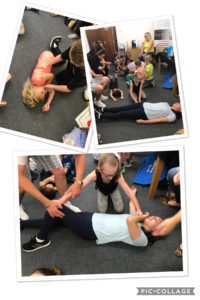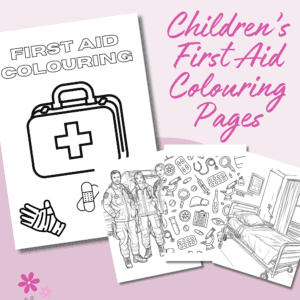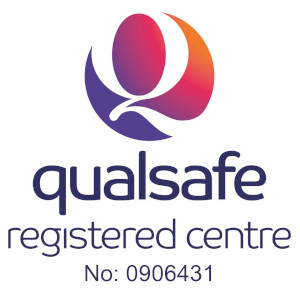Why Should Children be Taught First Aid – Learn Basic First Aid Skills
Empowering Children to Act in Emergencies
In an emergency, every second counts. Teaching children basic first aid skills empowers them to act quickly and effectively, potentially saving lives. Whether it’s treating a minor cut, performing CPR, or knowing when to call for help, these skills can make a significant difference. Children who are trained in first aid are more likely to remain calm and focused during emergencies, providing essential care while waiting for professional help to arrive.
Enhancing Safety and Prevention Awareness
First aid education goes beyond emergency response; it also promotes safety awareness and accident prevention. Children learn to recognise potential hazards and take preventive measures to avoid injuries. This awareness extends to various settings, including home, school, and playgrounds, making children more mindful of their actions and surroundings. As a result, they can help create a safer environment for themselves and their peers.
Fostering Responsibility and Confidence
Learning first aid instils a sense of responsibility and confidence in children. They become aware of their capability to help others, fostering a sense of duty and empathy. This confidence can translate into other areas of their lives, encouraging them to take initiative and act responsibly in various situations. Knowing they have the skills to make a difference can boost their self-esteem and inspire them to be proactive problem-solvers.
Promoting Lifelong Skills
First aid training is not just for childhood; it’s a lifelong skill that remains valuable at any age. By teaching children first aid early, we lay the foundation for a lifetime of preparedness and safety awareness. These skills can be built upon as they grow, ensuring they are always equipped to handle emergencies. Moreover, children who learn first aid are more likely to continue valuing and practicing safety and health measures throughout their lives.
Encouraging a Community of Helpers
When children learn first aid, they contribute to creating a community of helpers. This collective knowledge can have a ripple effect, as children share what they’ve learned with family and friends. A community where many individuals have basic first aid training is better prepared to handle emergencies, ultimately enhancing the overall safety and well-being of its members. Teaching children first aid is an investment in a more resilient and supportive community.
In conclusion, teaching children basic first aid skills is an essential aspect of their education and personal development. It equips them with the tools to respond effectively in emergencies, promotes safety awareness, fosters responsibility, and encourages a sense of community. By integrating first aid training into children’s lives, we not only protect them but also empower them to protect others.
A Hero in the Making: A Story how First Aid Knowledge Saved the Day
Eight-year-old Sophie was home with her mother, Emily, on a typical Saturday afternoon. They had just finished baking cookies together, and the sweet scent of chocolate chip cookies filled the kitchen. Sophie was drawing at the kitchen table while her mom tidied up. Suddenly, Emily felt dizzy and collapsed onto the floor.
Sophie looked up from her drawing, her heart pounding in her chest. Panic threatened to overwhelm her, but she remembered what she had learned in her first aid class at school. “Stay calm and think,” she told herself.
Assessing the Situation
Sophie took a deep breath and quickly scanned the room for any potential dangers. The kitchen was safe; there were no sharp objects or flames. She moved closer to her mother and knelt beside her, remembering to keep her own safety in mind.
Checking for a Response
“Mom? Mom, can you hear me?” Sophie gently shook her mother’s shoulder. Emily didn’t respond. Sophie remembered the next step from her training – she needed to check for signs of breathing. She leaned down, her ear close to Emily’s mouth, and watched her chest. Emily was breathing, but it was shallow and uneven.
Calling for Help
Realising the situation was serious, Sophie knew she needed to call for help. She grabbed the phone and dialled 999, her fingers trembling slightly. When the operator answered, Sophie spoke clearly and calmly, just like she had practiced.
“Hello, my name is Sophie. I’m eight years old. My mom has collapsed, and she’s not responding. She’s breathing, but it’s not normal. We need help. Our address is 123 Maple Street.”
Providing Vital Information
The operator asked Sophie to stay on the line and answer a few questions. Sophie explained everything she knew, and the operator reassured her that an ambulance was on the way. “You’re doing great, Sophie. Stay with your mom and keep an eye on her breathing. Help is coming.”
Staying Calm and Focused
Sophie stayed by her mother’s side, holding her hand and talking to her softly. “It’s going to be okay, Mom. The ambulance is on the way.” She kept an eye on Emily’s breathing, ready to provide more information if needed.
Help Arrives
Within minutes, which felt like an eternity to Sophie, the sound of sirens filled the air. The paramedics arrived, quickly assessing the situation. Sophie stepped back to give them space but stayed close enough to answer any questions.
“Sophie, you did an amazing job,” one of the paramedics said. “Your quick thinking and calmness really helped us.”
A Hero’s Recognition
Emily was stabilised and taken to the hospital for further treatment. The paramedics praised Sophie for her bravery and composure. Later, at the hospital, the doctor explained that Emily had experienced a sudden drop in blood pressure, causing her to faint. Thanks to Sophie’s quick actions, she received the necessary medical attention in time.
When Emily regained consciousness, she held Sophie’s hand tightly. “You’re my hero, Sophie. Thank you for saving me.”
Sophie smiled, proud and relieved. She realised just how important her first aid training had been. From that day on, she knew that being prepared could make all the difference in the world.
Conclusion
This experience reinforced the importance of teaching children first aid. Sophie’s story is a testament to how first aid training empowers children, giving them the skills and confidence to act effectively in emergencies. By equipping children with these vital skills, we prepare them to face unexpected situations with bravery and competence, potentially saving lives and creating a safer world for everyone.
Common Mistakes!
The question: ‘Why should children be taught first aid?’ We believe this should be; every child should be taught first aid. Sophie knew what to do because she had the first aid training. She knew;
- To be calm
- How to assess the situation and check dangers
- When to call the ambulance
- Check her moms airways
- How to check for normal breathing
- She knew the situation wasn’t right and she needed help
- How to keep engaged with the casualty until the paramedics arrived
- She knew her home address
Common mistakes children have are;
- Children panic and have lack of composure
- Believe the emergency services number is 911 or 101
- Don’t recognise unconsciousness, they believe their parent is sleeping. They pop a blanket on them and carry on playing
- Don’t assess for dangers and they become injured
- Move the casualty and cause further injury
- Delay in treatment, we hear children don’t know how to call 999 or even call for help
- If CPR is needed children don’t know how to start compressions. Or even know when the casualty isn’t breathing
- Can’t recognise what is life threatening
Why should children be taught first aid
First Aid Courses For Children – Why should children be taught first aid?
Our first aid courses for children aim to educate children on what to do in an emergency. As a parent, grandparent, caregiver, If you become unconscious would your child help you? If you are the only adult at home, would your child know what to do? Would they know when to call 999, or even know how to? On our first aid courses for children, we will teach children the importance what to do in an emergency and why we need to learn our address. For the older children, we will learn CPR and we will have the opportunity to listen to a defibrillator. Young children will learn about the dangers around the home and how to remove these if they ever come across an injured or unconscious casualty.
Our aim on our summer first aid courses for children is to have fun and to enjoy themselves. No child is pressured to take part if they wish not too. Will you join us on our courses, if you can’t, we are able to come to you at a minimum of 4 children present*.
On our summer courses for children, each child will have the opportunity to learn:
• What to do in a First Aid incident
• How and when to get adult help, and when to call 999.
• How to put someone into a recovery position
• Treat burns, cuts and bruises
• How to treat a bad cut (our bandages will be out) and to treat a nose bleed
• And finally we can’t miss how to perform CPR and use a defibrillator
*** Brownies and Rainbows don’t forget to bring your books to get your first aid badge signed off. ***
This summer first aid course is 2 hours long, charged at £18.97 per child.
All children will receive a certificate of attendance.
To book onto the First Aid course please email: info@hmbtrainingservices.co.uk or call 01543 453338 / 07506 906641 payment in full is required to confirm and book your place. Or to visit https://www.hmbtrainingservices.co.uk/latest-news/offer/first-aid-for-children
*maximum numbers of 12 children on the first aid course.
Our First Aid Colouring

We have collaborated with Children’s Activity Prints to design a great first aid colouring resource for children.
We believe mental health and relaxation should be a child’s top priority, especially with today’s stresses. This is why we have created a first aid colouring to help children to become relaxed and happy.
Inside this colouring pack, children or adults can colour in pages of: first aid kits, first aid items, nurses, doctors, paramedics, ambulances and a hospital room.
Downloading this resource can’t be any simpler. Simply CLICK HERE to download your copy.
There are 14 pages to colour in. Simply download, print and get your colouring crayons or pns at the ready.



